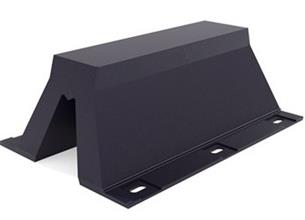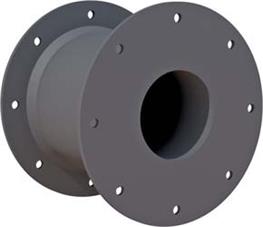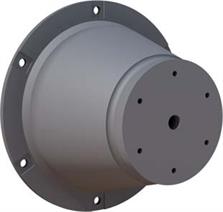After the effective berthing Energy(EB) of the ship is calculated as explained above, the selection of the fender system should be conducted in accordance with the fenders performance(Reaction Force, Energy absorption, and deflection curve).
The fender system selection has the following requirements:
1. Energy absorption of the selected fender system exceeds effective impacting energy of ships(EB).
2. Reaction force of the selected fender system is less than the ship's allowable reaction force.
3. Surface pressure of the selected fender system is less than the allowable hull surface pressure. You can meet the requirements by changing the dimensions of the frontal panel.
4. When the ship is berthing in a slanting direction, the fenders will bear a angular compression which will decrease the energy absorption at point of impact. Therefore the fender performance should be adjusted in accordance with the berthing angles when selecting the fender system.
5. The selected fender system should satisfy special requirements of extreme environments(high/cold temperature, strong winds, waves, high/low tides, etc.)
6. The selected fender system should be chosen wisely for the investment(performance/price). The price of maintenance and installation should be considered in your investment. Fenders that have an easy installation and maintenance are a better option for your investment.
Fender Spacing:
This calculations are critical, due to the possibility of a vessel hitting the dock structure while berthing at an angle. As per British Standards, for continuous quay, the installation pitch is recommended to be less than 15% of the vessel. Minimum installation pitch of fender can be calculated with the following equation:

Where
S: Maximum spacing between fenders
RB: Bow radius of board side of vessel(m, ft)
PU: Uncompressed Height of fender including panel(m, ft)
C: Fender height in rated compression.
: Fender deflection(m, ft)
If the bent radius(RB) is not known, we can estimate by the vessel's overall length(LOA) and width(B) as follows:
RB ≈ 0.5 ● [(B/2)+(LOA2/8● B)]
For vertical orientation arrangement, the types and sizes of all ships berthing shall be considered. All possible tides vary scope. To assure safe berthing we must consider the height and draft of the smallest and largest vessels to determine the point of contact on the structure. Do not design your arrangements considering only the largest vessels berthing in your dock, since your design might not work for smaller vessels berthing in your dock.


 info@dolphinmarines.com
info@dolphinmarines.com

